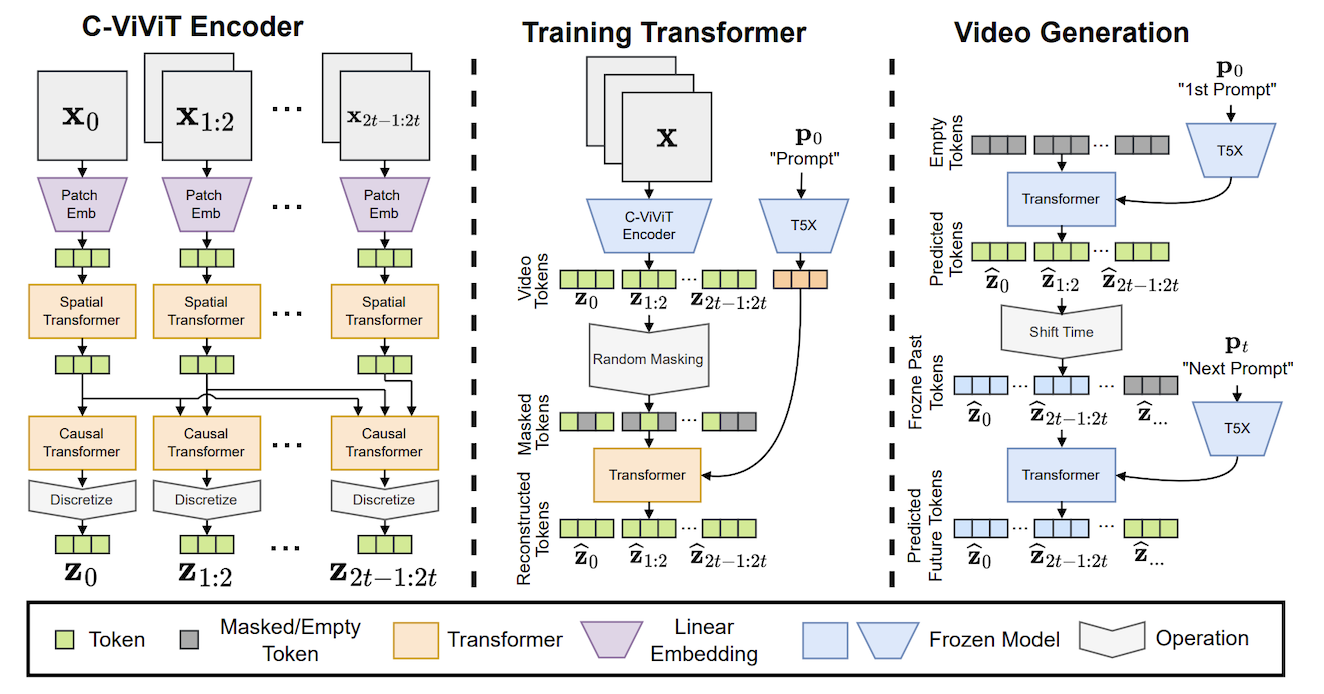tags:
- autoencoder
- phenaki
Phenaki CViViT - Obvious Research
Reproduction of the first step in the text-to-video model Phenaki.
Code and model weights for the Transformer-based autoencoder for videos called CViViT.
* Code, based on lucidrains' repo
The code is heavily based on the reproduction of Phenaki by the one and only lucidrains. However, for actually training the model we had to make several modifications. Here's the list of modifications compared to the original repo:
- added i3d video loss
- loss weights, architecture parameters, optimizer parameters closer to paper
- added learning rate schedulers (warmup + annealing)
- added webdataset integration
- added video data preprocessing (8fps, 11 frames per videos as in the paper)
- added vq L2 factorized codes (once again thanks to lucidrains)
- code is now compatible for multi GPU and multi node training
- added accelerate wandb integration
- added visualisation scripts
- minor bug fixes
* Model weight release, on Huggingface
We release the model weights of our best training. The model is trained on the Webvid-10M dataset on a multi-node multi-gpu setup.
As the model CViViT is an autoencoder for videos, here are examples of videos and reconstructions created by the model:
With our logo at Obvious:
With the famous blue/red pill from Matrix:
* Usage for inference
You can use the notebook CViViT_inference.ipynb in our Github repository to test the released model. First, download CVIVIT and frozen_models folders from this repo and put them in the github repo. Then you should be able to run the notebook normally. Please note that input images to the model should be 8 FPS videos of 11 frames.
* Next steps
We are working on the second part of training of Phenaki, which actually yields the full text-to-video model.
We appreciate any help, feel free to reach out! You can contact us:
- On Twitter: @obv_research
- By mail: [email protected]
* About Obvious Research
Obvious Research is an Artificial Intelligence research laboratory dedicated to creating new AI artistic tools, initiated by the artists’ trio Obvious, in partnership with La Sorbonne Université.



